As-conatmination in Bangladesh
Geochemical investigations and scientific-technical support regarding the problem of arsenic contamination in Pabna, Bangladesh
The Federal Foreign Office states, that globally 663 million people do not have access to clean drinking water (as of 2015). Different factors can endanger drinking water quality. In some countries, drinking water with high arsenic content poses a major threat to public health. Continuous intake has several adverse health effects like increased risk of cancer. Particularly affected by this problem are countries in Asia like Bangladesh, India (West Bengal) and North China (Smedley et al., 2002).
The highly polluted ground water of Bangladesh and West Bengal is internationally recognized a major threat to the affected population (Smedley et al., 2002). To supply germ-free drinking water, groundwater was increasingly exploited as a drinking water resource by the government of Bangladesh and supporting NGOs (Harvey et al., 2002). But utilization of groundwater as drinking water led to the appearance of diseases, which eventually could be attributed to arsenic intake (Smedley et al., 2002).
The research group Hydrochemistry and Hydrogeology at the Institute of Earth Sciences (GEOW) at the University of Heidelberg has profound knowledge about the behavior of arsenic in an aquatic milieu and the geochemical processes related to arsenic sorption and mobility, based on many years of research. Following studies were conducted at five sites near Ullapara, Pabna about 120km WNW of Dhaka. Between September 2015 and April 2017 several near-surface groundwater samples were taken from private wells. Subsequently, they were analyzed in the laboratory of GEOW for arsenic and groundwater composition.
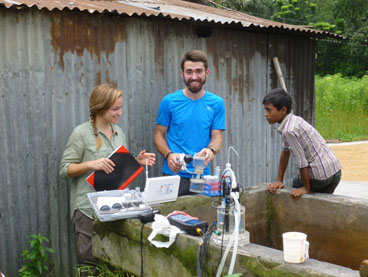
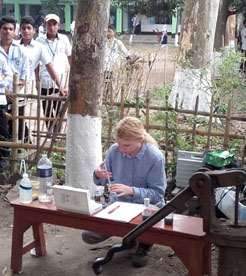
Figure 1 and 2: First sampling campaigns in 2015 and 2016 to get an understanding of the arsenic-mobilizing processes.
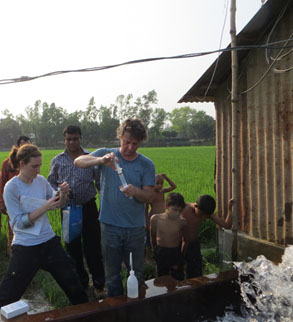
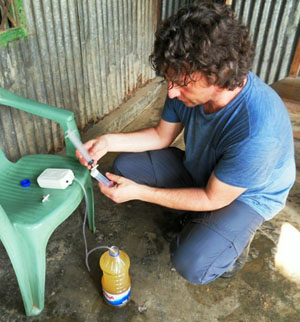
Figure 3 and 4: Irrigation wells were also sampled. Field tests revealed, that solved iron is precipitating quickly with addition of oxygen.
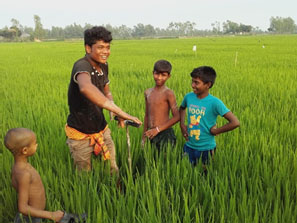
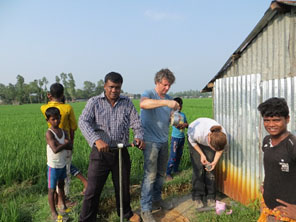
Figure 5 and 6: Sediment samples from the topsoil and deeper zones were taken to investigate the mineral composition and the sorbed amount of Arsenic.
Samples were taken at five locations in the surroundings of Ullapara, about 120km WNW of Dhaka. Comparable sampling during different seasons revealed, that most of the measured groundwater constituents (also arsenic) fluctuated insignificantly. However, phosphate and organic carbon show distinct seasonal variations with significantly elevated concentrations during rainy season. Both are known to contribute to arsenic release.
The presented projects emerged from a cooperation with the aid organization “AGAPE e.V.” in Heidelberg, which provided financing of travelling and equipment expenses as well as on-site infrastructure. During two field work campaigns two deep well drillings were supervised by GEOW staff and sediment samples were taken. In addition, the geoscientific analysis of the sampled sediments complemented the results of groundwater composition and contributed to the general process understanding. Focus of recent research projects is the exploration of anthropogenic influences on the process of arsenic release. This project is directly continued by the FAARM and AsFreeH2O project collaborations.
Three different filter-types for arsenic removal were developed, based on innovative adsorption technologies. In April 2017, they were installed for test operation at selected locations in Pabna. Follow-up inspections of functionality and potentially optimization for continuous operation are planned for fall 2017. The filter systems are developed focused on purification capacity, affordability and sustainability by designing a method that includes effective recycling of the used filter materials.
Collaborations with the University of Dhaka and the College of Ullapara have been established within the project and are intended to be intensified in the future. Through cooperation, it is intended to develop a continuous arsenic monitoring system and database.
So far, the outcome of this project has resulted in two Bachelor and three Master theses.
FAARM Marking Tubewells and taking tubewell water samples: Geochemical investigations of drinking water quality in Sylhet, Bangladesh
Within the framework of a representative field study in Sylhet, Bangladesh, the University Hospital Heidelberg (PD. Dr. med. Sabine Gabrysch) is evaluating the influence of malnutrition on child stunting. Therefore, the iron content of the drinking water will be examined. For this purpose approx. 2.000 wells used for drinking water are registered, labeled and sampled. Through the collaboration with the Institute of Earth Sciences (GEOW) additional parameters like arsenic and the complete water composition can be measured in order to derive important information about redox potential and influencing factors.
Thus, analysis costs will be shared between the University Hospital Heidelberg and the GEOW. Furthermore, the “Heidelberg Center for the Environment” (HCE) awarded a start-up funding to the project for a follow-up proposal. Recent research progress is presented in the project „Influence of human waste on arsenic release into drinking water in Bangladesh – geochemical and statistical investigations“.
The outcome of this project will contribute to the findings of the AsFreeH2O project. Additionally the location in Sylhet will be considered for the implementation of newly developed arsenic removal technologies and their social acceptance. Sylhet poses a challenging research environment due to high arsenic and high poverty.


